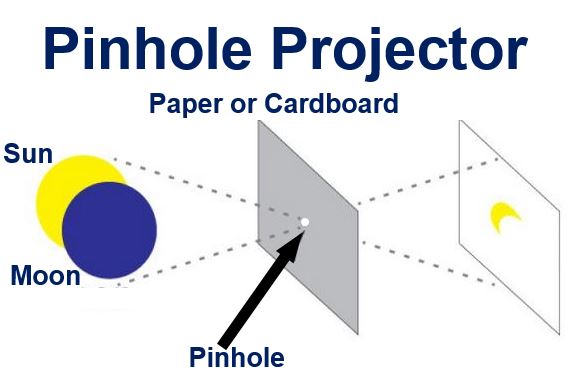On March 20th there will be a solar eclipse, with the far north of the UK experiencing 98% obscuration (darkness), and 85% in the south. However, remember that looking at the eclipse with the naked eye is very dangerous – it can cause serious eye damage and even blindness.
The solar eclipse will darken most of Europe, as well as northern Asia and western and northern Africa. In the Faroe Islands, halfway between Norway and Iceland, there will be a total eclipse, i.e. 100% obscuration.
A solar eclipse occurs when the Moon comes in between the Earth and the Sun, thus blocking out the sunlight. The Moon casts two shadows on the Earth’s surface: 1. The umbra, which is small and brings total darkness. 2. The penumbra is much bigger, and brings partial darkness. The UK will be covered by the penumbra on March 20th.

Even looking at a partial eclipse with the naked eye is dangerous.
The eclipse will last from 7.41am GMT until 11.50am GMT. It will be the last one in this part of the world until August 11th, 2026, so make the best!
The UK’s Met Office says the total eclipse will last 2 minutes and 24 seconds.
According to the British Astronomical Association:
“An obvious partial eclipse will be visible from every country in Europe and the partial phase will also be seen from places as widely spread as Newfoundland, North Africa and north-western Asia.”
The darkest part of the UK will be on the west coast of the Isle of Lewis, in the Outer Hebrides of Scotland, with 98% obscuration.
A Supermoon Eclipse
According to the Met Office, on March 20th there will be a Supermoon Eclipse. This means there will be both a Supermoon, when the Earth and Moon are as near to each other as they can be, plus a solar eclipse.

If you want to look up, make sure you are wearing proper eclipse glasses.
Don’t look directly at the eclipse
If you want to look at the eclipse, make sure you have proper filters. Otherwise you risk damaging your eyes, and even blindness.
NASA, the US space agency, says:
“The Sun can be viewed safely with the naked eye only during the few brief seconds or minutes of a total solar eclipse. Partial eclipses, annular eclipses, and the partial phases of total eclipses are never safe to watch without taking special precautions.”
“Even when 99% of the Sun’s surface is obscured during the partial phases of a total eclipse, the remaining photospheric crescent is intensely bright and cannot be viewed safely without eye protection.”
Follow the Solar Eclipse Safety Code, provided by the British Astronomical Association, which says:
“DON’T view the Sun through sunglasses of any type (single or multiple pairs), or filters made of black & white or colour photographic film, or any combination of photographic filters, crossed polarisers or gelatin filters, CDs, CD-ROMs, or smoked glass. These are NOT safe.”
“DO view the Sun ONLY through special filters made for safe solar viewing, e.g. aluminised mylar filters, or black polymer filters, identified as suitable for direct viewing of the Sun, bearing the CE mark AND a statement that it conforms to European Community Directive 89/686/EEC, or use a welder’s glass rated at No. 14 or higher. Always read and follow the manufacturer’s instructions carefully.”
Remember that children are more likely than adults to find it hard to resist the temptation to look up with no protection. Do not let kids enjoy the eclipse unsupervised.
Pinhole cameras are cheap and easy to make
A pinhole camera, also called a pinhole projector, is a safe way of enjoying an eclipse. It provides an inverted image of the Sun with part of it blocked by the Moon.
To make a pinhole camera you just need two sheets of white printer paper (or white cardboard) and a pin or thumbtack.

To make a pinhole projector, all you need are two sheets of paper and a pin.
With the pin, make a small, round, smooth hole in the middle of one of the sheets. Hold up to the Sun with the other sheet of paper about two feet away. Move them about until you can see the image on the sheet with no hole.
As you do this have you back to the Sun.
Solar eclipse and the electricity supply
Every year, more and more of Europe’s electricity generation comes from solar power. On March 20th, there will be an estimated drop of 35,000 MW during the eclipse, solar power generators say.
Electricity demand will surge when it goes dark, as people across the continent switch their lights on.
ENTSOE (European Network of Transmission System Operators for Electricity) said in a statement:
“Managing this event on the world’s largest interconnected grid is an unprecedented challenge for European TSOs.”
“Solar eclipses have happened before but with the increase of installed photovoltaic energy generation, the risk of an incident could be serious without appropriate countermeasures, as was pointed out in ENTSOE’s Winter Outlook Report of last December.”
